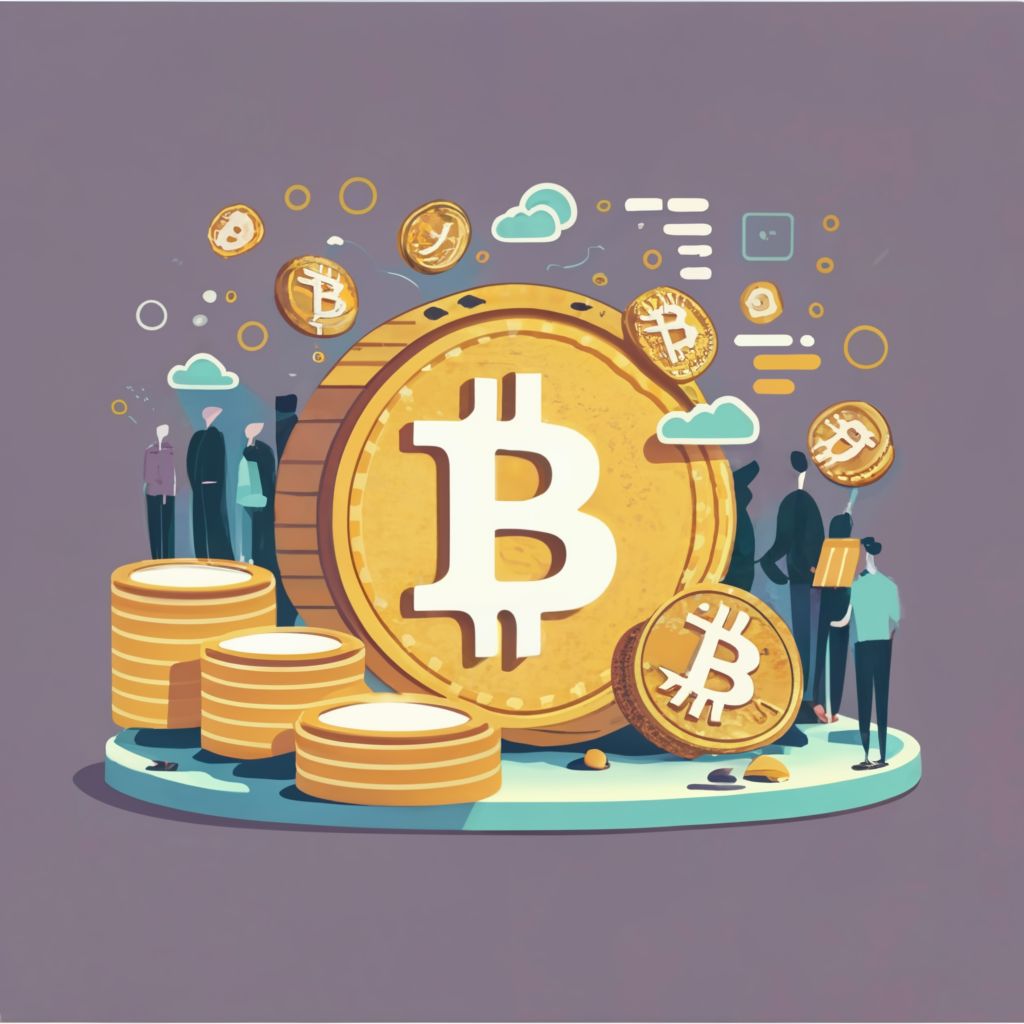Cryptocurrency operates on a decentralized technology that manages and records transactions in a ledger shared across many computers. This technology is known as blockchain—a distributed ledger enforced by a disparate network of computers. The decentralized nature of cryptocurrency makes it theoretically immune to government control or manipulation, distinguishing it from fiat currency.
Below, you will find a short introduction to the 10 biggest cryptocurrencies in the world (by market cap). This list is based on the market values at the beginning of 2023.

Bitcoin (BTC)
The original cryptocurrency, Bitcoin, remains the undisputed leader in terms of market capitalization and popularity. Created by an anonymous entity known as Satoshi Nakamoto in 2009, Bitcoin introduced the world to blockchain technology. Its decentralized nature, limited supply, and security features have made it a digital gold standard in the crypto space. Read more about bitcoin.
Ethereum (ETH)
Ethereum was launched in 2015 by Vitalik Buterin. It is not just a cryptocurrency but a platform for decentralized applications (dApps) and smart contracts. Its native currency, Ether, powers transactions and applications within the ecosystem. Ethereum’s flexibility and its recent transition to a proof-of-stake consensus mechanism underline its innovation and commitment to sustainability.
Binance Coin (BNB)
Binance Coin, created as a utility token for the Binance cryptocurrency exchange, has expanded its utility beyond just exchange fee discounts. It is now used for transactions on Binance’s blockchain, Binance Smart Chain, which supports dApps and smart contracts. It works like Ethereum.
Ripple (XRP)
Ripple aims to revolutionize international money transfers by making them instant and nearly free. XRP, its native cryptocurrency, plays a crucial role in facilitating these transactions on the Ripple network. Despite facing regulatory challenges, XRP maintains a strong presence in the cryptocurrency market.
Cardano (ADA)
Developed by one of Ethereum’s co-founders, Charles Hoskinson, Cardano is a third-generation cryptocurrency that aims to solve scalability, interoperability, and sustainability issues present in earlier cryptocurrencies. Its research-driven approach and commitment to peer-reviewed scientific research have garnered significant attention.
Solana (SOL)
Solana is known for its incredibly fast transaction speeds and low costs, thanks to its unique consensus mechanisms combining proof-of-history (PoH) and proof-of-stake (PoS). Its capabilities have made it a popular platform for dApps, decentralized finance (DeFi), and non-fungible tokens (NFTs).
Polkadot (DOT)
Polkadot aims to enable different blockchains to transfer messages and value in a trust-free fashion; sharing unique features and functionality while pooling their security. Its core component, the relay chain, allows for the interconnectivity of various networks.
Dogecoin (DOGE)
Initially started as a joke based on a popular internet meme, Dogecoin has gained a cult following and significant investment, partly due to endorsements from high-profile individuals like Elon Musk. Its low transaction costs make it a preferred option for small transactions and online tipping.
Chainlink (LINK)
Chainlink is a decentralized oracle network that aims to connect smart contracts with data from the real world. Its token, LINK, is used to pay for services on the network. Chainlink’s technology is pivotal in the expansion of smart contracts’ capabilities.
Litecoin (LTC)
Created by Charlie Lee in 2011, Litecoin was designed to be the silver to Bitcoin’s gold. It offers faster transaction confirmation times and a higher maximum supply. Litecoin’s longevity and continued relevance are testaments to its stability and robustness.
This article was last updated on: February 20, 2024
